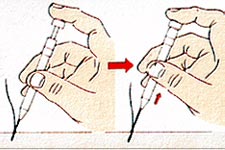This is a comment I received in response to this past Friday’s post, Hair Transplant 10 Months After One Procedure:
The results look great.
I do have a question though. I’ve often read that it’s frowned upon to transplant to the crown at a younger age because you might not have the hair to cover the front as you get balder (and who wants to be bald in the front and have hair in the crown?)
Was the crown covered because he has hair density similar to his father, or maybe he’s older than I think and not on pace for a Norwood VII?

 The patient is in his early 40s and is a very special case. His density is very, very high (like his father and his brother), which means that he easily has a total of 10,000-14,000 graft capability. I could’ve easily taken out 5,000 grafts had the grafts been needed. He is in a good situation to stop doing hair transplants now and with the Propecia that he takes religiously he probably will not lose much more anytime soon. I don’t expect him to follow his father’s Norwood 7 pattern.
The patient is in his early 40s and is a very special case. His density is very, very high (like his father and his brother), which means that he easily has a total of 10,000-14,000 graft capability. I could’ve easily taken out 5,000 grafts had the grafts been needed. He is in a good situation to stop doing hair transplants now and with the Propecia that he takes religiously he probably will not lose much more anytime soon. I don’t expect him to follow his father’s Norwood 7 pattern.
If the patient was to lose more hair between the frontal area and the crown (which was transplanted in this first procedure), he would have lots of reserve still left. It is important to note that very high hair density was critical in this decision process.

 I recently met with a hair transplant doctor from Asia who confided with me that the results from those doctors who use the
I recently met with a hair transplant doctor from Asia who confided with me that the results from those doctors who use the  Hi Dr Rassman,
Hi Dr Rassman, I generally like the results on the ‘A’ pattern balding patient, provided that they have a good density and scalp laxity. Even a Norwood 7 can get full coverage (see
I generally like the results on the ‘A’ pattern balding patient, provided that they have a good density and scalp laxity. Even a Norwood 7 can get full coverage (see 